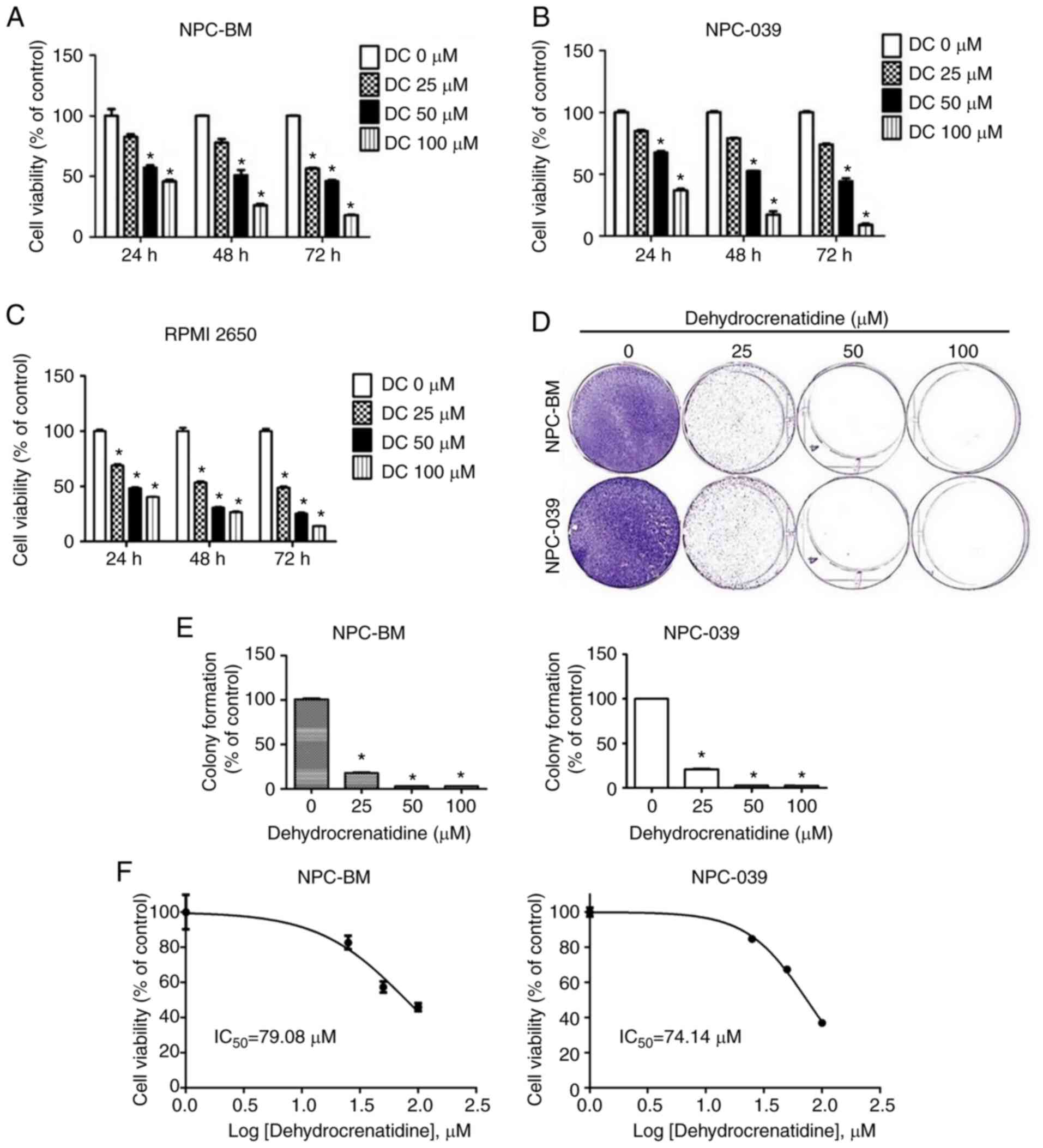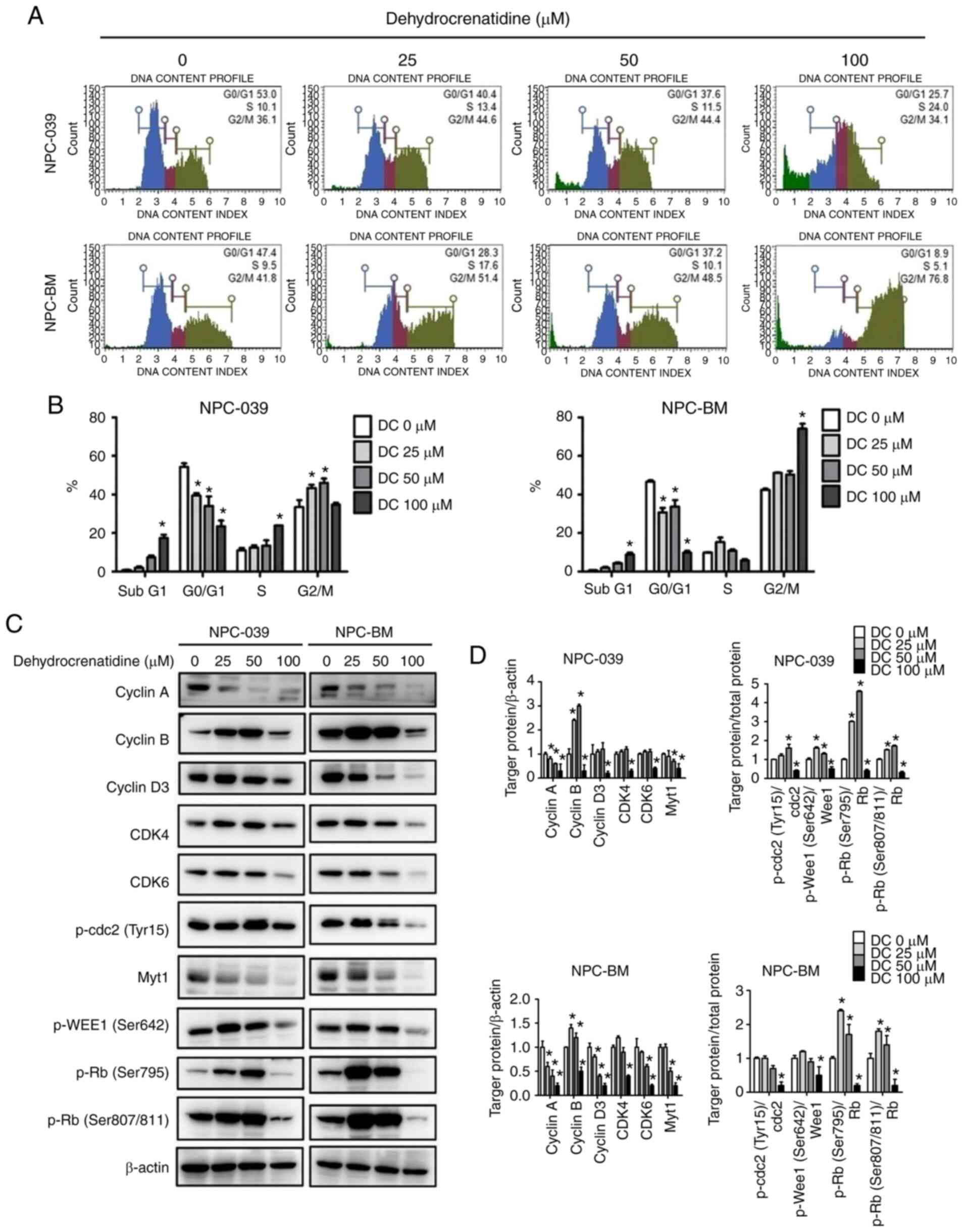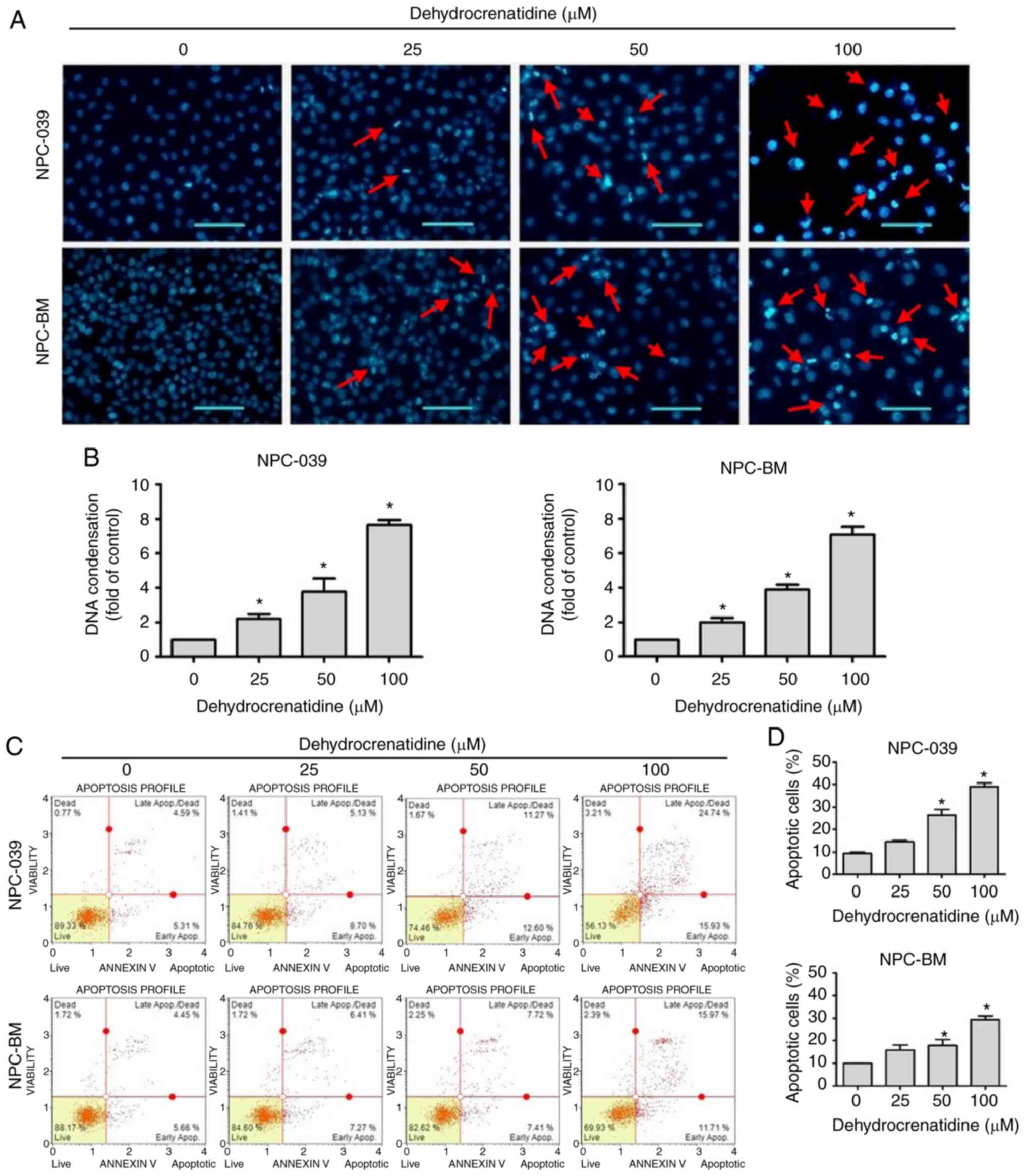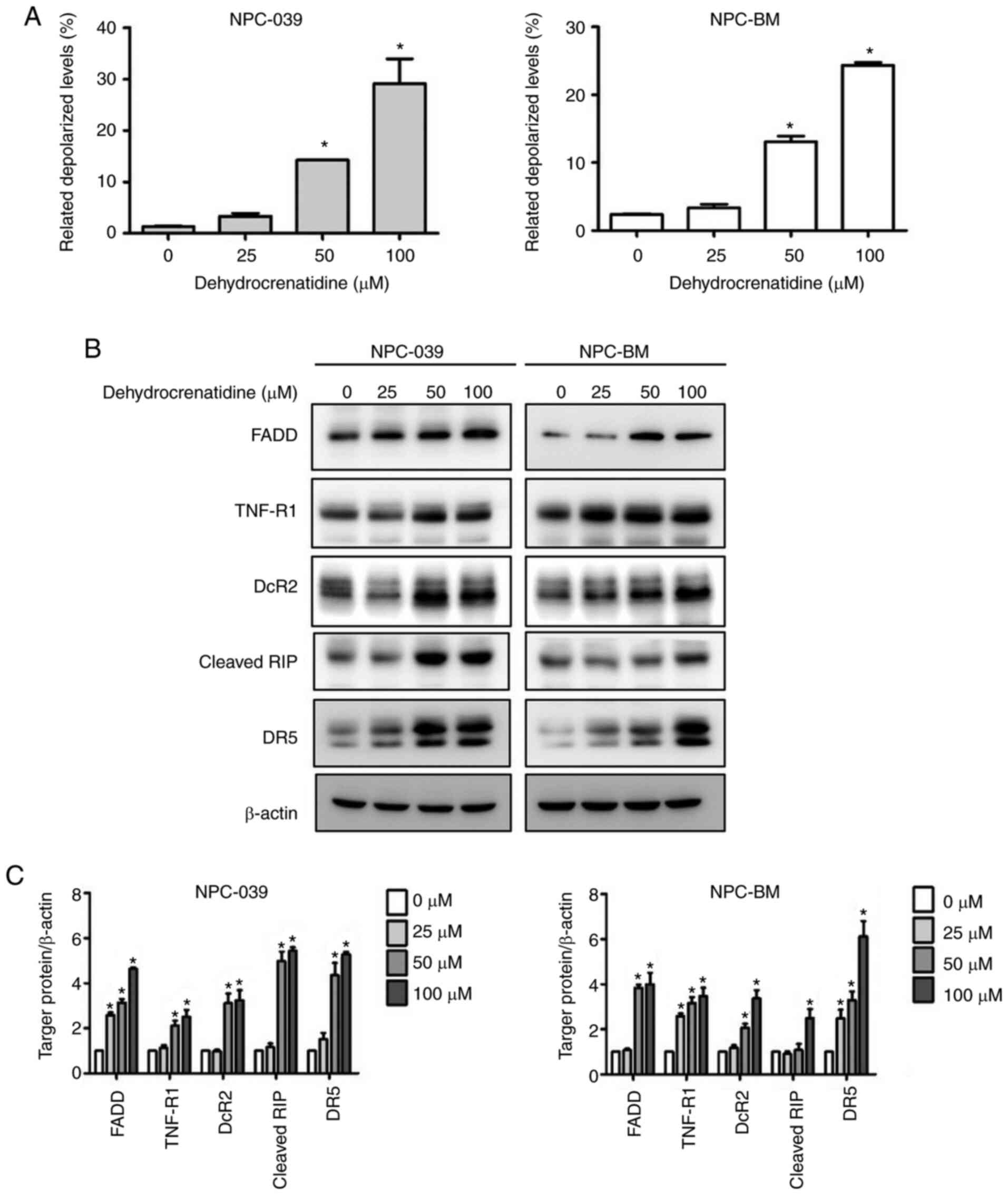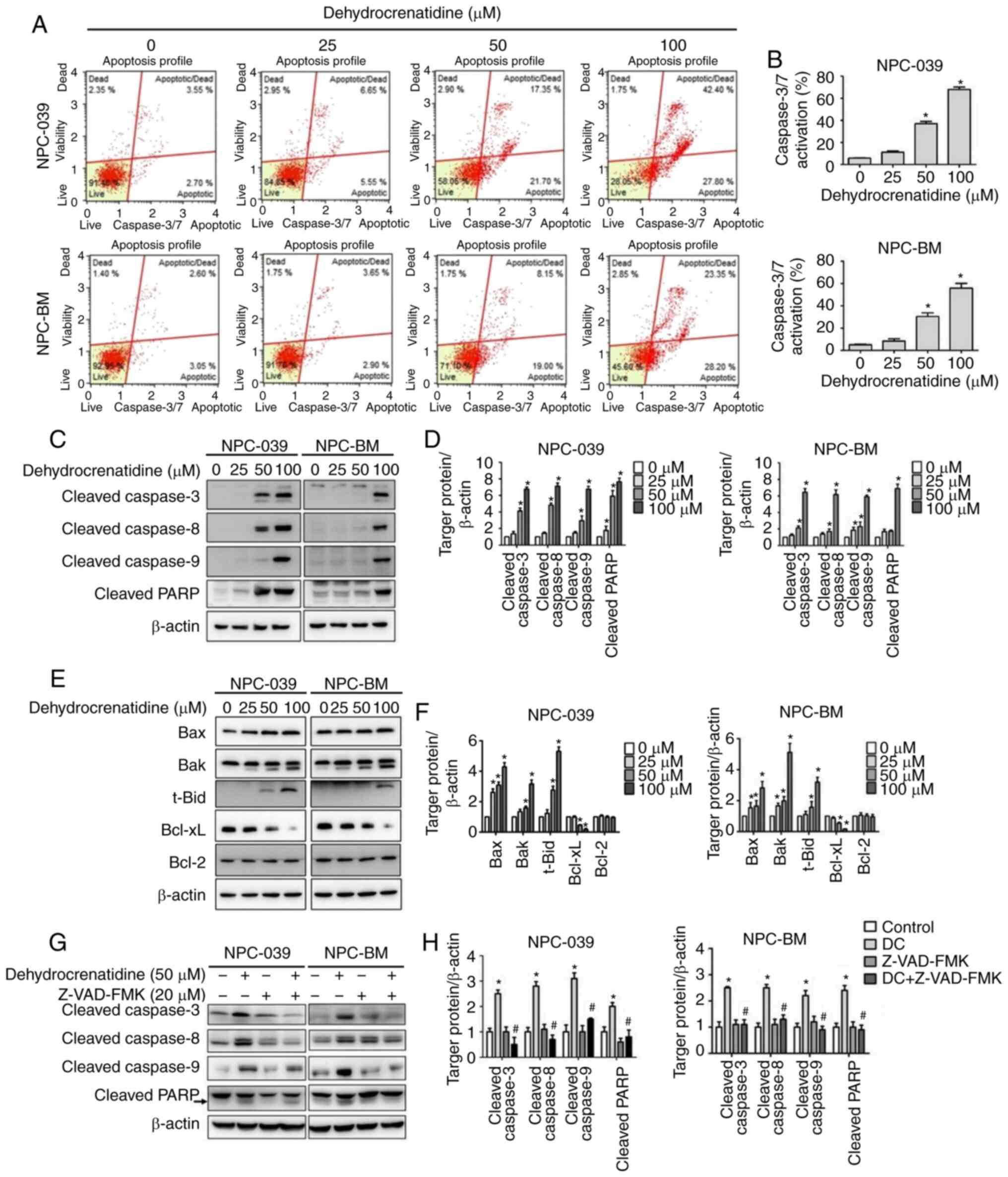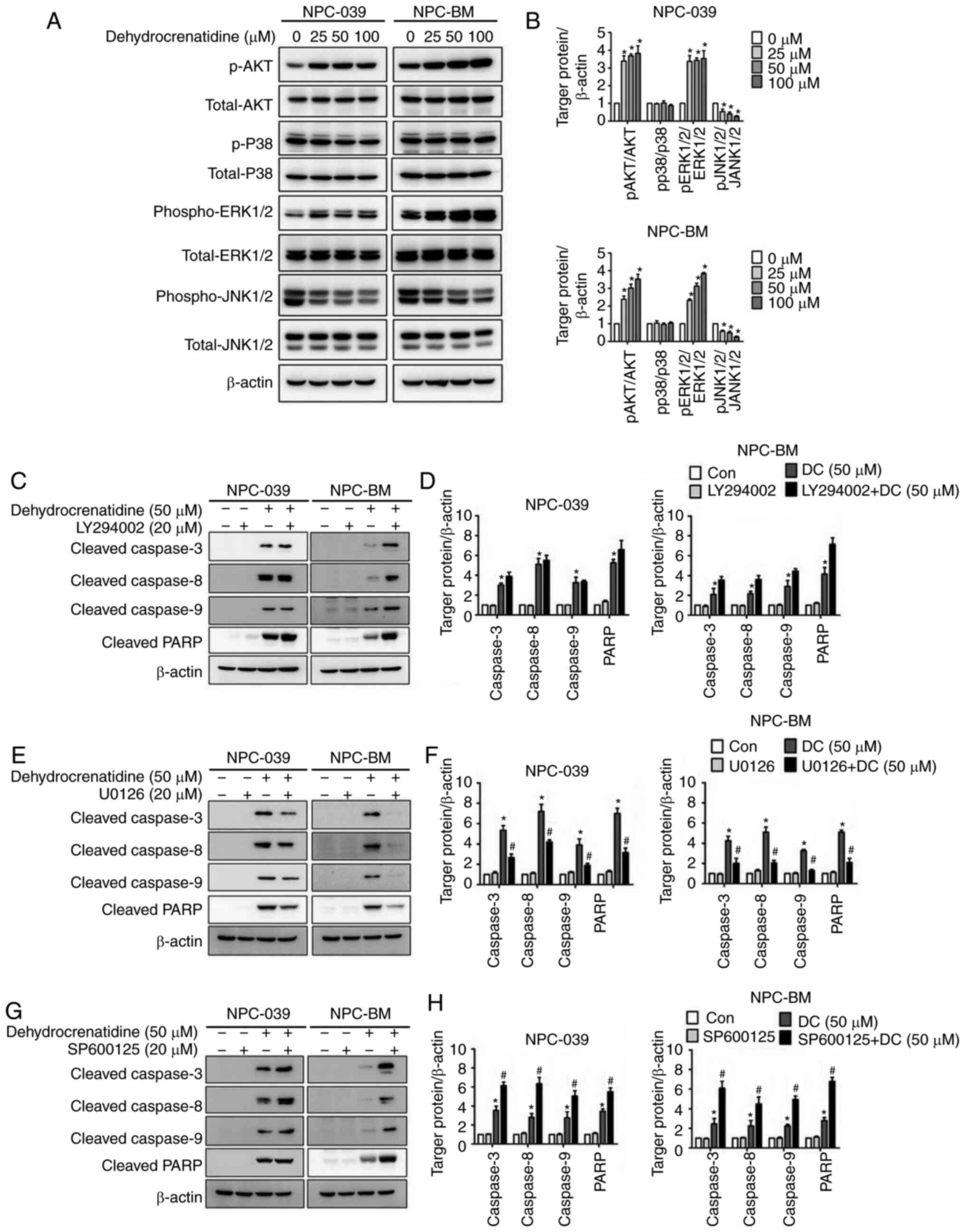|
1
|
Du T, Xiao J, Qiu Z and Wu K: The
effectiveness of intensity-modulated radiation therapy versus 2D-RT
for the treatment of nasopharyngeal carcinoma: A systematic review
and meta-analysis. PLoS One. 14:e02196112019. View Article : Google Scholar : PubMed/NCBI
|
|
2
|
Chen YP, Chan AT, Le QT, Blanchard P, Sun
Y and Ma J: Nasopharyngeal carcinoma. Lancet. 394:64–80. 2019.
View Article : Google Scholar : PubMed/NCBI
|
|
3
|
Chan KC, Woo JK, King A, Zee BC, Lam WK,
Chan SL, Chu SW, Mak C, Tse IO, Leung SY, et al: Analysis of plasma
Epstein-Barr virus DNA to screen for nasopharyngeal cancer. N Engl
J Med. 377:513–522. 2017. View Article : Google Scholar : PubMed/NCBI
|
|
4
|
Tsang RK: Nasopharyngeal
carcinoma-improving cure with technology and clinical trials. World
J Otorhinolaryngol Head Neck Surg. 6:1–3. 2020. View Article : Google Scholar : PubMed/NCBI
|
|
5
|
Sun XS, Li XY, Chen QY, Tang LQ and Mai
HQ: Future of radiotherapy in nasopharyngeal carcinoma. Br J
Radiol. 92:201902092019. View Article : Google Scholar : PubMed/NCBI
|
|
6
|
Guo SS, Hu W, Chen QY, Li JM, Zhu SH, He
Y, Li JW, Xia L, Ji L, Lin CY, et al: Pretreatment quality of life
as a predictor of survival for patients with nasopharyngeal
carcinoma treated with IMRT. BMC Cancer. 18:1142018. View Article : Google Scholar : PubMed/NCBI
|
|
7
|
Liu LT, Liang YJ, Guo SS, Mo HY, Guo L,
Wen YF, Xie HJ, Tang QN, Sun XS, Liu SL, et al: Induction
chemotherapy followed by radiotherapy versus concurrent
chemoradiotherapy in the treatment of different risk locoregionally
advanced nasopharyngeal carcinoma. Ther Adv Med Oncol.
12:17588359209282142020. View Article : Google Scholar : PubMed/NCBI
|
|
8
|
Zhao WY, Shang XY, Zhao L, Yao GD, Sun Z,
Huang XX and Song SJ: Bioactivity-guided isolation of β-carboline
alkaloids with potential anti-hepatoma effect from Picrasma
quassioides (D. Don) Benn. Fitoterapia. 130:66–72. 2018.
View Article : Google Scholar : PubMed/NCBI
|
|
9
|
Lee HE, Choi ES, Shin JA, Kim LH, Cho NP
and Cho SD: Apoptotic effect of methanol extract of Picrasma
quassioides by regulating specificity protein 1 in human
cervical cancer cells. Cell Biochem Funct. 32:229–235. 2014.
View Article : Google Scholar : PubMed/NCBI
|
|
10
|
Xie DP, Gong YX, Jin YH, Ren CX, Liu Y,
Han YH, Jin MH, Zhu D, Pan QZ, Yu LY, et al: Anti-tumor properties
of Picrasma quassioides extracts in H-RasG12V
liver cancer are mediated through ROS-dependent mitochondrial
dysfunction. nticancer Res. 40:3819–3830. 2020. View Article : Google Scholar : PubMed/NCBI
|
|
11
|
Shin NR, Shin IS, Jeon CM, Hong JM, Oh SR,
Hahn KW and Ahn KS: Inhibitory effects of Picrasma
quassioides (D.Don) Benn. On airway inflammation in a murine
model of allergic asthma. Mol Med Rep. 10:1495–1500. 2014.
View Article : Google Scholar : PubMed/NCBI
|
|
12
|
Ma Y and Wink M: The beta-carboline
alkaloid harmine inhibits BCRP and can reverse resistance to the
anticancer drugs mitoxantrone and camptothecin in breast cancer
cells. Phytother Res. 24:146–149. 2010. View Article : Google Scholar : PubMed/NCBI
|
|
13
|
Zhao F, Tang Q, Xu J, Wang S, Li S, Zou X
and Cao Z: Dehydrocrenatidine inhibits voltage-gated sodium
channels and ameliorates mechanic allodia in a rat model of
neuropathic pain. Toxins (Basel). 11:2292019. View Article : Google Scholar : PubMed/NCBI
|
|
14
|
Zhao WY, Chen JJ, Zou CX, Zhou WY, Yao GD,
Wang XB, Lin B, Huang XX and Song SJ: Effects of enantiomerically
Pure β-carboline alkaloids from Picrasma quassioides on
human hepatoma cells. Planta Med. 85:648–656. 2019. View Article : Google Scholar : PubMed/NCBI
|
|
15
|
Zhao F, Gao Z, Jiao W, Chen L, Chen L and
Yao X: In vitro anti-inflammatory effects of beta-carboline
alkaloids, isolated from Picrasma quassioides, through
inhibition of the iNOS pathway. Planta Med. 78:1906–1911. 2012.
View Article : Google Scholar : PubMed/NCBI
|
|
16
|
Jiao WH, Chen GD, Gao H, Li J, Gu BB, Xu
TT, Yu HB, Shi GH, Yang F, Yao XS and Lin HW: (±)-Quassidines I and
J, two pairs of cytotoxic bis-β-carboline alkaloid enantiomers from
Picrasma quassioides. J Nat Prod. 78:125–130. 2015.
View Article : Google Scholar : PubMed/NCBI
|
|
17
|
Gong YX, Liu Y, Jin YH, Jin MH, Han YH, Li
J, Shen GN, Xie DP, Ren CX, Yu LY, et al: Picrasma
quassioides extract elevates the cervical cancer cell apoptosis
through ROS-mitochondrial axis activated p38 MAPK signaling
pathway. In Vivo. 34:1823–1833. 2020. View Article : Google Scholar : PubMed/NCBI
|
|
18
|
Zhang J, Zhu N, Du Y, Bai Q, Chen X, Nan
J, Qin X, Zhang X, Hou J, Wang Q and Yang J: Dehydrocrenatidine is
a novel janus kinase inhibitor. Mol Pharmacol. 87:572–581. 2015.
View Article : Google Scholar : PubMed/NCBI
|
|
19
|
Liao SK, Perng YP, Shen YC, Chung PJ,
Chang YS and Wang CH: Chromosomal abnormalities of a new
nasopharyngeal carcinoma cell line (NPC-BM1) derived from a bone
marrow metastatic lesion. Cancer Genet Cytogenet. 103:52–58. 1998.
View Article : Google Scholar : PubMed/NCBI
|
|
20
|
Liu YT, Chuang YC, Lo YS, Lin CC, His YT,
Hsieh MJ and Chen MK: Asiatic acid, extracted from centella
asiatica and induces apoptosis pathway through the phosphorylation
p38 mitogen-activated protein kinase in cisplatin-resistant
nasopharyngeal carcinoma cells. Biomolecules. 10:1842020.
View Article : Google Scholar : PubMed/NCBI
|
|
21
|
Jana A, Das A, Krett NL, Guzman G, Thomas
A, Mancinelli G, Bauer J, Ushio-Fukai M, Fukai T and Jung B:
Nuclear translocation of Atox1 potentiates activin A-induced cell
migration and colony formation in colon cancer. PLoS One.
15:e02279162020. View Article : Google Scholar : PubMed/NCBI
|
|
22
|
Chen YT, Hsieh MJ, Chen PN, Weng CJ, Yang
SF and Lin CW: Erianin induces apoptosis and autophagy in oral
squamous cell carcinoma cells. Am J Chin Med. 48:183–200. 2020.
View Article : Google Scholar : PubMed/NCBI
|
|
23
|
Hsieh MY, Hsieh MJ, Lo YS, Lin CC, Chuang
YC, Chen MK and Chou MC: Modulating effect of coronarin D in
5-fluorouracil resistance human oral cancer cell lines induced
apoptosis and cell cycle arrest through JNK1/2 signaling pathway.
Biomed Pharmacother. 128:1103182020. View Article : Google Scholar : PubMed/NCBI
|
|
24
|
Tunc D, Dere E, Karakas D, Cevatemre B,
Yilmaz VT and Ulukaya E: Cytotoxic and apoptotic effects of the
combination of palladium (II) 5,5-diethylbarbiturate complex with
bis(2-pyridylmethyl)amine and curcumin on non small lung cancer
cell lines. Bioorg Med Chem. 25:1717–1723. 2017. View Article : Google Scholar : PubMed/NCBI
|
|
25
|
Zhao L, Fong AH, Liu N and Cho WC:
Molecular subtyping of nasopharyngeal carcinoma (NPC) and a
microRNA-based prognostic model for distant metastasis. J Biomed
Sci. 25:162018. View Article : Google Scholar : PubMed/NCBI
|
|
26
|
Sun PY, Chen YH, Feng XB, Yang CX, Wu F
and Wang RS: High-dose static and dynamic intensity-modulated
radiotherapy combined with chemotherapy for patients with locally
advanced nasopharyngeal carcinoma improves survival and reduces
brainstem toxicity. Med Sci Monit. 24:8849–8859. 2018. View Article : Google Scholar : PubMed/NCBI
|
|
27
|
Wang F, Jiang C, Wang L, Yan F, Sun Q, Ye
Z, Liu T, Fu Z and Jiang Y: Influence of concurrent chemotherapy on
locoregionally advanced nasopharyngeal carcinoma treated with
neoadjuvant chemotherapy plus intensity-modulated radiotherapy: A
retrospective matched analysis. Sci Rep. 10:24892020. View Article : Google Scholar : PubMed/NCBI
|
|
28
|
Zheng ZQ, Li ZX, Zhou GQ, Lin L, Zhang LL,
Lv JW, Huang XD, Liu RQ, Chen F, He XJ, et al: Long noncoding RNA
FAM225A promotes nasopharyngeal carcinoma tumorigenesis and
metastasis by acting as ceRNA to sponge miR-590-3p/miR-1275 and
upregulate ITGB3. Cancer Res. 79:4612–4626. 2019. View Article : Google Scholar : PubMed/NCBI
|
|
29
|
Jain CK, Majumder HK and Roychoudhury S:
Natural compounds as anticancer agents targeting DNA
topoisomerases. Curr Genomics. 18:75–92. 2017. View Article : Google Scholar : PubMed/NCBI
|
|
30
|
Cao R, Peng W, Wang Z and Xu A:
beta-Carboline alkaloids: Biochemical and pharmacological
functions. Curr Med Chem. 14:479–500. 2007. View Article : Google Scholar : PubMed/NCBI
|
|
31
|
Mansoor TA, Ramalho RM, Mulhovo S,
Rodrigues CM and Ferreira MJ: Induction of apoptosis in HuH-7
cancer cells by monoterpene and beta-carboline indole alkaloids
isolated from the leaves of tabernaemontana elegans. Bioorg Med
Chem Lett. 19:4255–4258. 2009. View Article : Google Scholar : PubMed/NCBI
|
|
32
|
Bemis DL, Capodice JL, Gorroochurn P, Katz
AE and Buttyan R: Anti-prostate cancer activity of a beta-carboline
alkaloid enriched extract from rauwolfia vomitoria. Int J Oncol.
29:1065–1073. 2006.PubMed/NCBI
|
|
33
|
Bai J, Li Y and Zhang G: Cell cycle
regulation and anticancer drug discovery. Cancer Biol Med.
14:348–362. 2017. View Article : Google Scholar : PubMed/NCBI
|
|
34
|
Yam CH, Fung TK and Poon RY: Cyclin A in
cell cycle control and cancer. Cell Mol Life Sci. 59:1317–1326.
2002. View Article : Google Scholar : PubMed/NCBI
|
|
35
|
Vigneron S, Sundermann L, Labbé JC,
Pintard L, Radulescu O, Castro A and Lorca T: Cyclin
A-cdk1-dependent phosphorylation of bora is the triggering factor
promoting mitotic entry. Dev Cell. 45:637–650.e7. 2018. View Article : Google Scholar : PubMed/NCBI
|
|
36
|
Sun X, Zhangyuan G, Shi L, Wang Y, Sun B
and Ding Q: Prognostic and clinicopathological significance of
cyclin B expression in patients with breast cancer: A
meta-analysis. Medicine (Baltimore). 96:e68602017. View Article : Google Scholar : PubMed/NCBI
|
|
37
|
Ujiki MB, Ding XZ, Salabat MR, Bentrem DJ,
Golkar L, Milam B, Talamonti MS, Bell RH Jr, Iwamura T and Adrian
TE: Apigenin inhibits pancreatic cancer cell proliferation through
G2/M cell cycle arrest. Mol Cancer. 5:762006. View Article : Google Scholar : PubMed/NCBI
|
|
38
|
Pomerening JR, Kim SY and Ferrell JE Jr:
Systems-level dissection of the cell-cycle oscillator: Bypassing
positive feedback produces damped oscillations. Cell. 122:565–578.
2005. View Article : Google Scholar : PubMed/NCBI
|
|
39
|
Sha W, Moore J, Chen K, Lassaletta AD, Yi
CS, Tyson JJ and Sible JC: Hysteresis drives cell-cycle transitions
in xenopus laevis egg extracts. Proc Natl Acad Sci USA.
100:975–980. 2003. View Article : Google Scholar : PubMed/NCBI
|
|
40
|
Mota NSRS, Kviecinski MR, Felipe KB,
Grinevicius VMAS, Siminski T, Almeida GM, Zeferino RC, Pich CT,
Filho DW and Pedrosa RC: β-carboline alkaloid harmine induces DNA
damage and triggers apoptosis by a mitochondrial pathway: Study in
silico, in vitro and in vivo. Int J Funct Nutr. 1:12020.
|
|
41
|
Johnson J, Thijssen B, McDermott U,
Garnett M, Wessels LF and Bernards R: Targeting the RB-E2F pathway
in breast cancer. Oncogene. 35:4829–4835. 2016. View Article : Google Scholar : PubMed/NCBI
|
|
42
|
Ahmad I, Fakhri S, Khan H, Jeandet P,
Aschner M and Yu ZL: Targeting cell cycle by β-carboline alkaloids
in vitro: Novel therapeutic prospects for the treatment of cancer.
Chem Biol Interact. 330:1092292020. View Article : Google Scholar : PubMed/NCBI
|
|
43
|
Cao MR, Li Q, Liu ZL, Liu HH, Wang W, Liao
XL, Pan YL and Jiang JW: Harmine induces apoptosis in HepG2 cells
via mitochondrial signaling pathway. Hepatobiliary Pancreat Dis
Int. 10:599–604. 2011. View Article : Google Scholar : PubMed/NCBI
|
|
44
|
Abdelsalam MA, AboulWafa OM, Badawey EA,
El-Shoukrofy MS, El-Miligy MM and Gouda N: Design and synthesis of
some β-carboline derivatives as multi-target anticancer agents.
Future Med Chem. 10:2791–2814. 2018. View Article : Google Scholar : PubMed/NCBI
|
|
45
|
Portt L, Norman G, Clapp C, Greenwood M
and Greenwood MT: Anti-apoptosis and cell survival: A review.
Biochim Biophys Acta. 1813:238–259. 2011. View Article : Google Scholar : PubMed/NCBI
|
|
46
|
Ouyang L, Shi Z, Zhao S, Wang FT, Zhou TT,
Liu B and Bao JK: Programmed cell death pathways in cancer: A
review of apoptosis, autophagy and programmed necrosis. Cell
Prolif. 45:487–498. 2012. View Article : Google Scholar : PubMed/NCBI
|
|
47
|
Wang S and El-Deiry WS: TRAIL and
apoptosis induction by TNF-family death receptors. Oncogene.
22:8628–8633. 2003. View Article : Google Scholar : PubMed/NCBI
|
|
48
|
Elrod HA and Sun SY: Modulation of death
receptors by cancer therapeutic agents. Cancer Biol Ther.
7:163–173. 2008. View Article : Google Scholar : PubMed/NCBI
|
|
49
|
Kischkel FC, Lawrence DA, Chuntharapai A,
Schow P, Kim KJ and Ashkenazi A: Apo2L/TRAIL-dependent recruitment
of endogenous FADD and caspase-8 to death receptors 4 and 5.
Immunity. 12:611–620. 2000. View Article : Google Scholar : PubMed/NCBI
|
|
50
|
Lin Y, Devin A, Rodriguez Y and Liu ZG:
Cleavage of the death domain kinase RIP by caspase-8 prompts
TNF-induced apoptosis. Genes Dev. 13:2514–2526. 1999. View Article : Google Scholar : PubMed/NCBI
|
|
51
|
Deng Z, Gao P, Yu L, Ma B, You Y, Chan L,
Mei C and Chen T: Ruthenium complexes with phenylterpyridine
derivatives target cell membrane and trigger death
receptors-mediated apoptosis in cancer cells. Biomaterials.
129:111–126. 2017. View Article : Google Scholar : PubMed/NCBI
|
|
52
|
Derakhshan A, Chen Z and Van Waes C:
Therapeutic small molecules target inhibitor of apoptosis proteins
in cancers with deregulation of extrinsic and intrinsic cell death
pathways. Clin Cancer Res. 23:1379–1387. 2017. View Article : Google Scholar : PubMed/NCBI
|
|
53
|
Han NN, Zhou Q, Huang Q and Liu KJ:
Carnosic acid cooperates with tamoxifen to induce apoptosis
associated with caspase-3 activation in breast cancer cells in
vitro and in vivo. Biomed Pharmacother. 89:827–837. 2017.
View Article : Google Scholar : PubMed/NCBI
|
|
54
|
Debatin KM: Apoptosis pathways in cancer
and cancer therapy. Cancer Immunol Immunother. 53:153–159. 2004.
View Article : Google Scholar : PubMed/NCBI
|
|
55
|
Li-Weber M: Targeting apoptosis pathways
in cancer by Chinese medicine. Cancer Lett. 332:304–312. 2013.
View Article : Google Scholar : PubMed/NCBI
|
|
56
|
Li C, Wang Y, Wang C, Yi X, Li M and He X:
Anticancer activities of harmine by inducing a pro-death autophagy
and apoptosis in human gastric cancer cells. Phytomedicine.
28:10–18. 2017. View Article : Google Scholar : PubMed/NCBI
|
|
57
|
Hamsa TP and Kuttan G: Harmine activates
intrinsic and extrinsic pathways of apoptosis in B16F-10 melanoma.
Chin Med. 6:112011. View Article : Google Scholar : PubMed/NCBI
|
|
58
|
Zaid H, Silbermann M, Amash A, Gincel D,
Abdel-Sattar E and Sarikahya NB: Medicinal plants and natural
active compounds for cancer chemoprevention/chemotherapy. Evid
Based Complement Alternat Med. 2017:79524172017. View Article : Google Scholar : PubMed/NCBI
|
|
59
|
Zhang P, Huang CR, Wang W, Zhang XK, Chen
JJ, Wang JJ, Lin C and Jiang JW: Harmine hydrochloride triggers G2
phase arrest and apoptosis in MGC-803 cells and SMMC-7721 cells by
upregulating p21, activating caspase-8/Bid, and downregulating
ERK/bad pathway. Phytother Res. 30:31–40. 2016. View Article : Google Scholar : PubMed/NCBI
|
|
60
|
Yue J and López JM: Understanding MAPK
signaling pathways in apoptosis. Int J Mol Sci. 21:23462020.
View Article : Google Scholar : PubMed/NCBI
|
|
61
|
Junttila MR, Li SP and Westermarck J:
Phosphatase-mediated crosstalk between MAPK signaling pathways in
the regulation of cell survival. FASEB J. 22:954–965. 2008.
View Article : Google Scholar : PubMed/NCBI
|
|
62
|
Fan Y, Patima A, Chen Y, Zeng F, He W, Luo
L, Jie Y, Zhu Y, Zhang L, Lei J, et al: Cytotoxic effects of
β-carboline alkaloids on human gastric cancer SGC-7901 cells. Int J
Clin Exp Med. 8:12977–12982. 2015.PubMed/NCBI
|
|
63
|
Chien CC, Wu MS, Shen SC, Ko CH, Chen CH,
Yang LL and Chen YC: Activation of JNK contributes to
evodiamine-induced apoptosis and G2/M arrest in human colorectal
carcinoma cells: A structure-activity study of evodiamine. PLoS
One. 9:e997292014. View Article : Google Scholar : PubMed/NCBI
|
|
64
|
Lee YJ, Choi SY and Yang JH: NMDA
receptor-mediated ERK 1/2 pathway is involved in PFHxS-induced
apoptosis of PC12 cells. Sci Total Environ. 491-492:227–234. 2014.
View Article : Google Scholar : PubMed/NCBI
|
|
65
|
Al-Ejeh F, Kumar R, Wiegmans A, Lakhani
SR, Brown MP and Khanna KK: Harnessing the complexity of DNA-damage
response pathways to improve cancer treatment outcomes. Oncogene.
29:6085–6098. 2010. View Article : Google Scholar : PubMed/NCBI
|
|
66
|
Boutros R, Lobjois V and Ducommun B: CDC25
phosphatases in cancer cells: Key players? Good targets? Nat Rev
Cancer. 7:495–507. 2007. View Article : Google Scholar : PubMed/NCBI
|
|
67
|
Freed-Pastor WA, Mizuno H, Zhao X,
Langerød A, Moon SH, Rodriguez-Barrueco R, Barsotti A, Chicas A, Li
W, Polotskaia A, et al: Mutant p53 disrupts mammary tissue
architecture via the mevalonate pathway. Cell. 148:244–258. 2012.
View Article : Google Scholar : PubMed/NCBI
|
|
68
|
Freed-Pastor WA and Prives C: Mutant p53:
One name, many proteins. Genes Dev. 26:1268–1286. 2012. View Article : Google Scholar : PubMed/NCBI
|
|
69
|
Fang EF, Zhang CZ, Ng TB, Wong JH, Pan WL,
Ye XJ, Chan YS and Fong WP: Momordica Charantia lectin, a type II
ribosome inactivating protein, exhibits antitumor activity toward
human nasopharyngeal carcinoma cells in vitro and in vivo. Cancer
Prev Res (Phila). 5:109–121. 2012. View Article : Google Scholar : PubMed/NCBI
|
|
70
|
Song Y, Yang J, Bai WL and Ji WY:
Antitumor and immunoregulatory effects of astragalus on
nasopharyngeal carcinoma in vivo and in vitro. Phytother Res.
25:909–915. 2011. View Article : Google Scholar : PubMed/NCBI
|
|
71
|
Zeng M, Wu X, Li F, She W, Zhou L, Pi B,
Xu Z and Huang X: Laminaria japonica polysaccharides effectively
inhibited the growth of nasopharyngeal carcinoma cells in vivo and
in vitro study. Exp Toxicol Pathol. 69:527–532. 2017. View Article : Google Scholar : PubMed/NCBI
|















